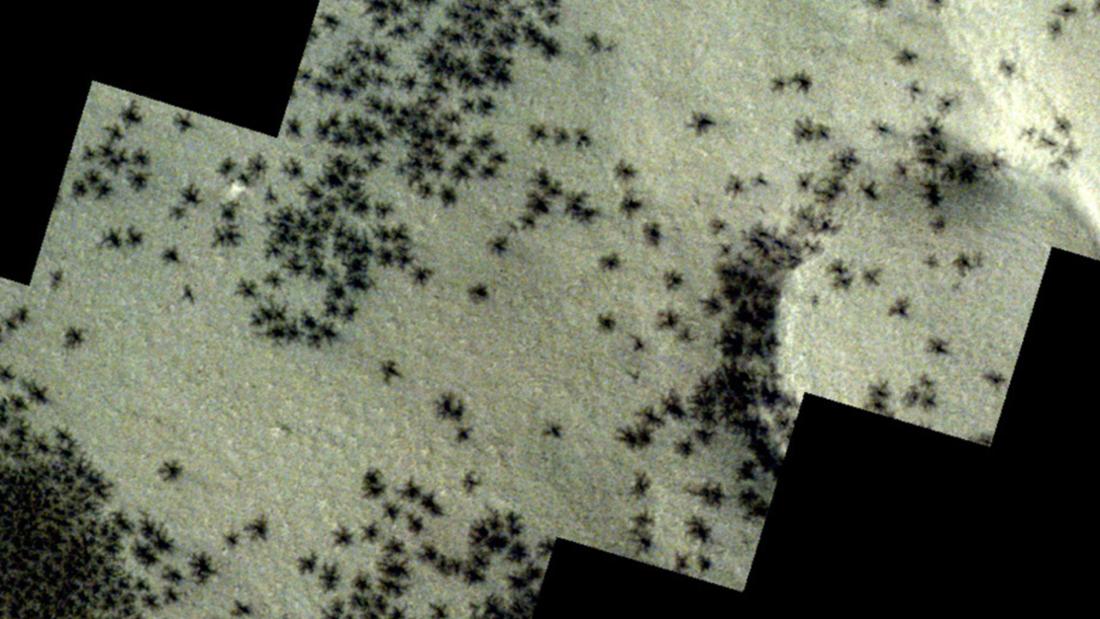Press
The Mars Express spacecraft has photographed “telltale traces of spiders” on Mars. The truth behind these formations might surprise.
Frankfurt – The question of whether there was ever life on Mars is a central topic in research around the red planet. The NASA rover “Perseverance,” for example, is exploring Mars in search of evidence of past life. The European space agency Esa has now taken up this debate again. With a certain smile the authority announces on its website: “Signs of spiders on Mars”.
Esa says on its website that its Mars Express spacecraft has imaged the “telltale traces of spiders” scattered across the south polar region of Mars. The probe recently delivered unique images of the red planet. However, the space agency quickly clarified: “These small, dark structures are not real spiders, but are created when the spring sun falls on the layers of carbon dioxide that were deposited in the dark winter months.”
“Telltale traces of spiders” are something completely different
Sunlight causes the carbon dioxide ice at the bottom of the layer to be converted into gas. This gas rises and breaks through the ice layers above. “In the Martian spring, the gas flows out, tearing dark material to the surface and shattering layers of ice up to one meter thick,” says Esa.
The gas, laden with dark dust, shoots up through cracks in the ice in the form of tall fountains or geysers before falling back down and settling on the surface. This leads to the formation of dark spots between 45 meters and one kilometer in diameter. This is also how the “spider-shaped” patterns are created. From the perspective of the Esa photo, it becomes clear that the supposedly spider-like objects are actually significantly larger.
| June 2, 2003 |
| December 2003 |
| In operation |
| Atmosphere, surface and subsurface of Mars; Martian moons Phobos and Deimos |
“Spiders” on Mars are near the “Inca City”
The “spiders” captured by the Mars Express camera are located right on the edge of a part of Mars that the researchers call “Inca City” – a linear, almost geometric network of mountain ridges said to resemble Inca ruins . Inca City, better known as Angustus Labyrinthus, was discovered in 1972 by NASA’s Mariner 9 probe.

Esa explains: “We still don’t know exactly how the Inca city came into being. It could be that sand dunes have turned to stone over time. “It is possible that material such as magma or sand is seeping through fractured layers of Martian rock.” However, it could also be that they are so-called “eskers”, winding structures that are connected to glaciers. (bk/tab)

